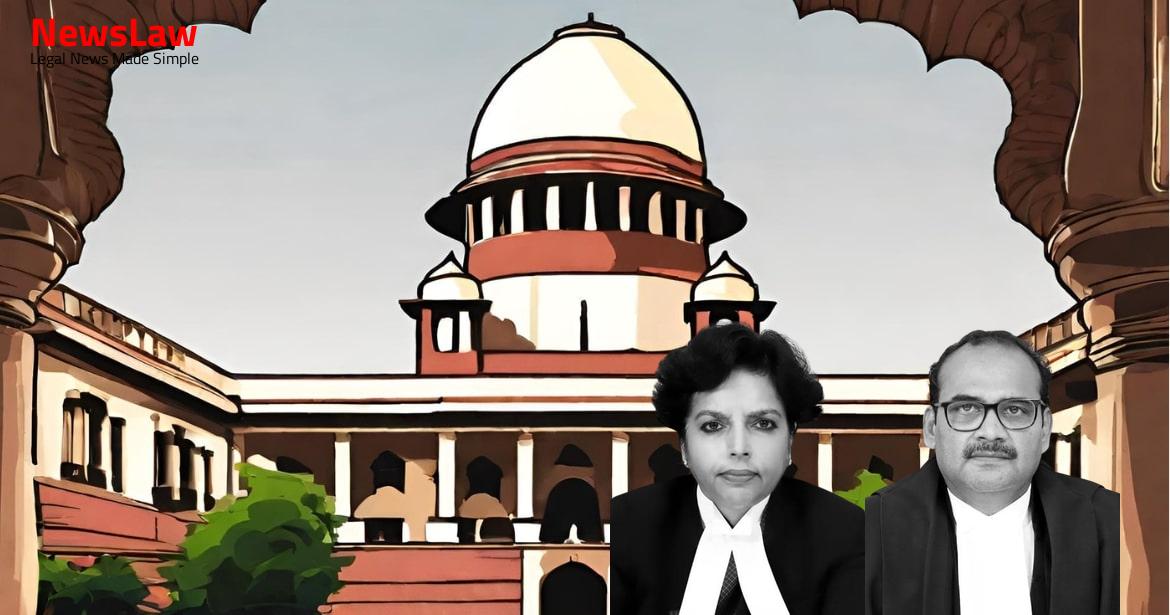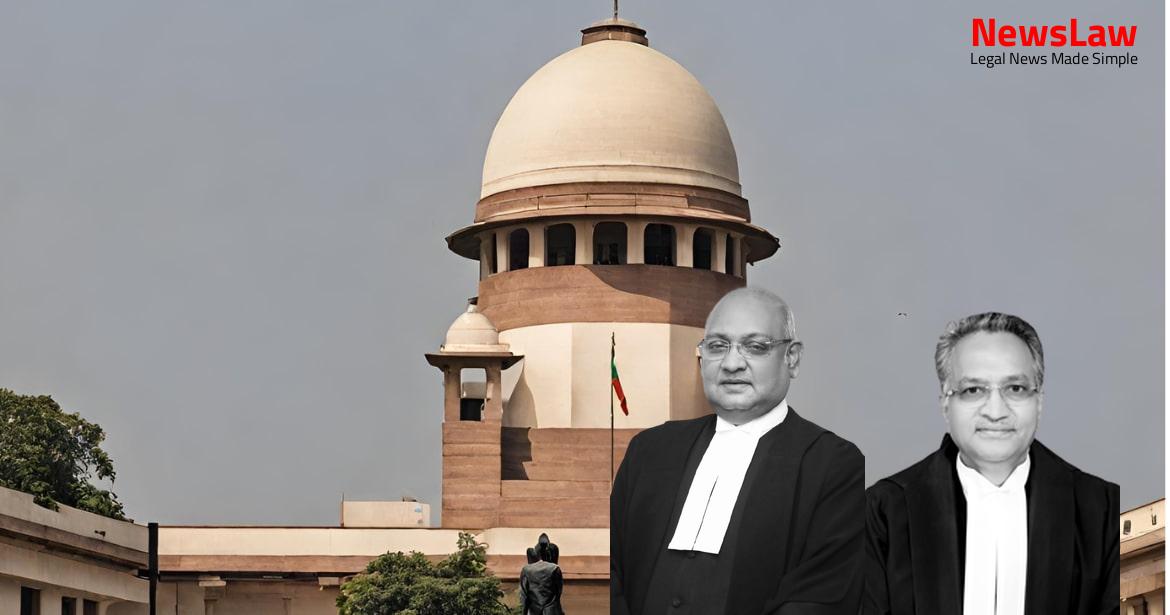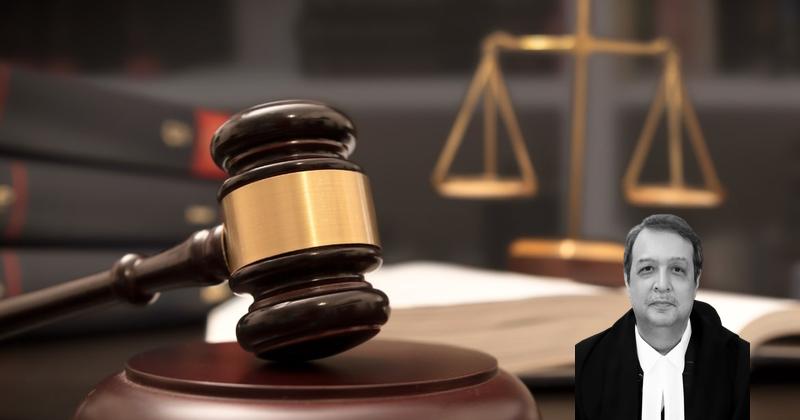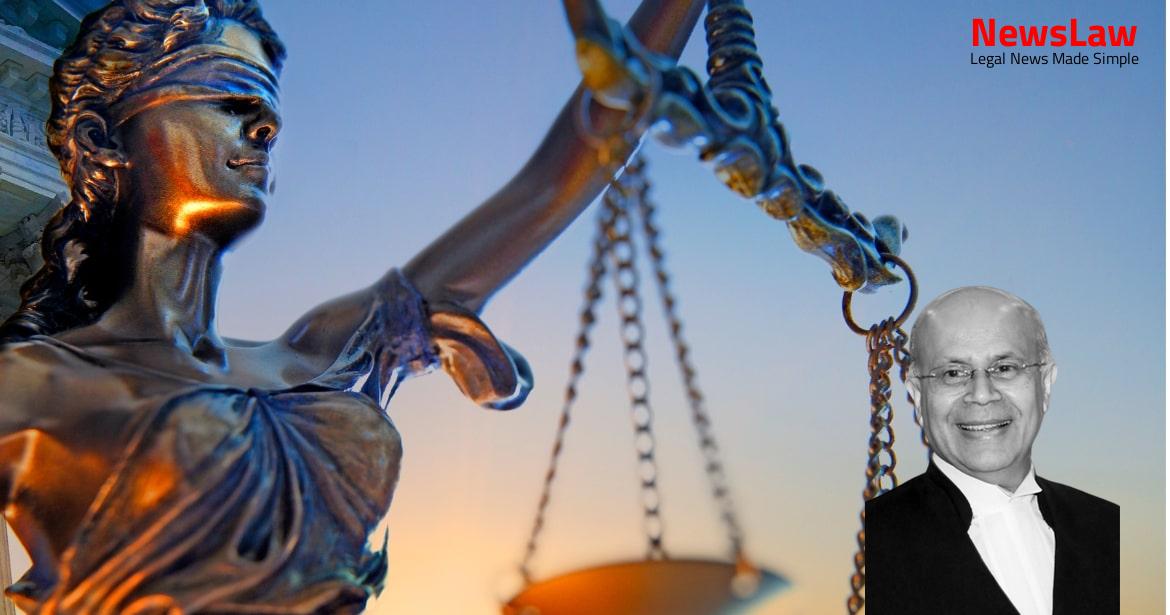Delve into the intricate legal analysis of self-defence as discussed in a significant court judgment. The case delves into the nuances of the right to self-defence, exploring factors such as the nature of the threat, proportionality of response, and the exercise of this defensive right in good faith. Follow along to understand how the court navigates the legal framework surrounding self-defence and the implications of the decision for similar cases.
Facts
- The Division Bench of the High Court of Delhi dismissed the writ petition filed by the appellant challenging the conviction to life imprisonment for murder under Section 302 IPC.
- The Appellate Authority’s decision upholding the conviction and the General Security Force Court’s order were also upheld.
- The appellant’s statutory petition was dismissed by the Union of India, leading to the appeal in the High Court.
- Seventeen witnesses were examined by the prosecution in the case against the appellant.
- The charges against the appellant included committing murder in a rubber garden located between specific border points.
- The appellant pleaded not guilty to the charges and did not produce any witnesses in his defense.
- Appellant’s plea of private defence was rejected, leading to his conviction and sentencing to life imprisonment.
- Testimony of Dr. Ranjit Kumar Das (PW-10) regarding the postmortem and nature of injuries was crucial.
- Dr. Ranjit Kumar Das stated that the firer was in an elevated position compared to the victim, based on the direction of the bullets and injuries.
- Testimony of SI Shanti Bhushan Bhuiya (PW-13) about the position of the deceased’s legs supported the conclusion that the appellant made the deceased crouch down before firing the shots.
Also Read: Withdrawal of Prospective Resignation: Legal Analysis
Arguments
- Appellant’s counsel argues that the topography of the Rubber plantation where the incident occurred was uneven, with depressions and undulations, suggesting that the positioning of the deceased with folded legs does not definitively implicate the appellant.
- Based on the eye-witness account of CT H. Vijay Kumar (PW-1) who patrolled with the appellant, it is noted that the appellant was at a higher level than the deceased, leading to the natural trajectory of bullets hitting the upper part of the deceased’s body when fired.
- The appellant’s defense asserts that he acted in self-defense to protect his life when confronted by armed intruders who had surrounded him, justifying his actions in that context.
- The appellant’s counsel explains that the bullets fired by the appellant struck the deceased at a downward angle, not directly face-on, indicating a defensive trajectory.
- Learned counsel for the appellant argued in favor of the appellant’s right to self-defence based on the testimony of witnesses and the deceased’s involvement in smuggling activities.
- Learned Additional Solicitor General representing the respondent defended the GSFC’s findings and the High Court’s decision to disbelieve the testimony of the appellant and rely on the witnesses’ statements.
- The High Court’s decision was supported by the testimonies of local villagers and the doctor’s account of the incident.
- The central question in the appeal was whether the appellant had the right to exercise self-defence in the given circumstances as per the provisions in the IPC.
- The discussion highlighted the natural instinct of self-preservation and the legal framework relating to the right of private defence under the IPC.
- The assessment of whether the appellant acted within the bounds of self-defence depended on the specific facts and nuances of the case.
Also Read: Acquittal in Kidnapping and Abduction Case: Court’s Legal Analysis
Analysis
- The right of private defence is a defensive right that is available when circumstances justify it.
- The accused must prove that there was a reasonable ground to apprehend grievous hurt or death to claim this right.
- The exercise of this right should be in good faith and without malice.
- The surrounding circumstances, the nature of the threat, and the confusion created by the situation determine the validity of the self-defence plea.
- The level of violence used for defence should be proportional to the perceived threat.
- The extent of harm caused must be necessary to ward off the attack or prevent further reasonable apprehension.
- The accused must provide a reasonable and probable version that satisfies the court of the necessity of their actions.
- The right of private defence should not be vindictive or malicious.
- Various factors like prevailing circumstances, the feelings of the accused, and the nature of the assault are considered in determining the validity of the self-defence plea.
- The means and force adopted by the threatened person must be assessed based on the specific circumstances and not through abstract parameters.
- Exception 2 presupposes that the offender exceeded the right of private defence by causing death
- Section 300 Exception 2 applies if the offender exceeds the power given by law in good faith of private defence
- The offender must cause death without premeditation and without intending more harm than necessary for defence
- Sections 102 and 105 IPC stipulate the commencement and continuance of the right of private defence
- The right of private defence begins with a reasonable apprehension of danger and continues as long as the danger persists
- Sections 100 and 101 IPC define when the right of private defence of the body extends to causing death or harm other than death
- The burden of proof rests with the accused who takes up the plea of self-defence.
- The exercise of the right of private defence should not be vindictive, aggressive, or retributive.
- Sections 100 and 101 IPC define the limit and extent of the right of private defence.
- The accused need not prove the existence of private self-defence beyond reasonable doubt; preponderance of probabilities suffices.
- In moments of excitement and disturbed mental equilibrium, individuals may not use force commensurate with the danger, impacting the outcome of the defence plea.
- The right of private defence is expected to repel unlawful aggression, not as a retaliatory measure.
- The right to defend does not include the right to launch an offensive; it is for defense when the need to defend no longer exists.
- The court must determine if the accused had the right of private defence in the situation where harm was caused.
- In cases of self-defence causing death, if the offender exceeds the power given by law, but without premeditation or intent to cause more harm than necessary, culpable homicide is not murder.
- The plea of self-defence cannot be based on surmises and speculation; it must be supported by circumstances from the prosecution evidence.
- The appellant was confronted by armed intruders who posed a threat to his life.
- He used his rifle to defend himself and inadvertently caused the death of one intruder.
- The appellant should not have been convicted of murder but of culpable homicide not amounting to murder under Exception 2 to Section 300 IPC.
- The appellant’s actions can be considered as private self-defense based on a preponderance of probabilities in his favor.
Also Read: K. vs. The State of Rajasthan)
Supreme Court Judgment Upholds Acquittal in Falsifying Date of Birth Case
Decision
- The appeal is partly allowed and the appellant is held guilty for the offence of culpable homicide, not amounting to murder.
- The judgement is modified based on Exception 2 to Section 300 IPC.
- The appellant had already suffered incarceration for over eleven years by the time bail was granted in July 2016.
- Considering the peculiar facts and circumstances of the case, the period of incarceration is deemed sufficient punishment.
- The appellant is set free for the period already undergone and the bail bonds are discharged.
Case Title: EX.CT. MAHADEV Vs. THE DIRECTOR GENERAL BORDER SECURITY FORCE (2022 INSC 644)
Case Number: C.A. No.-002606-002606 / 2012



